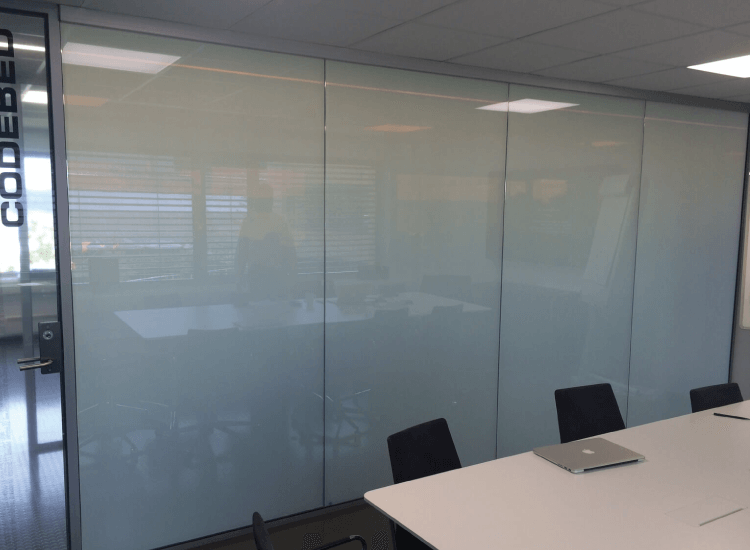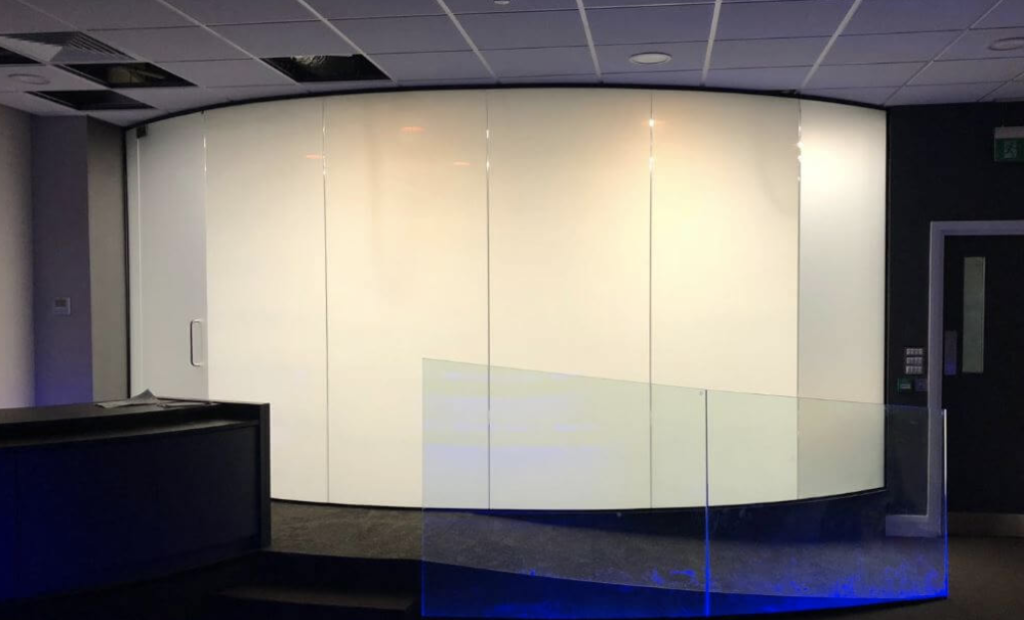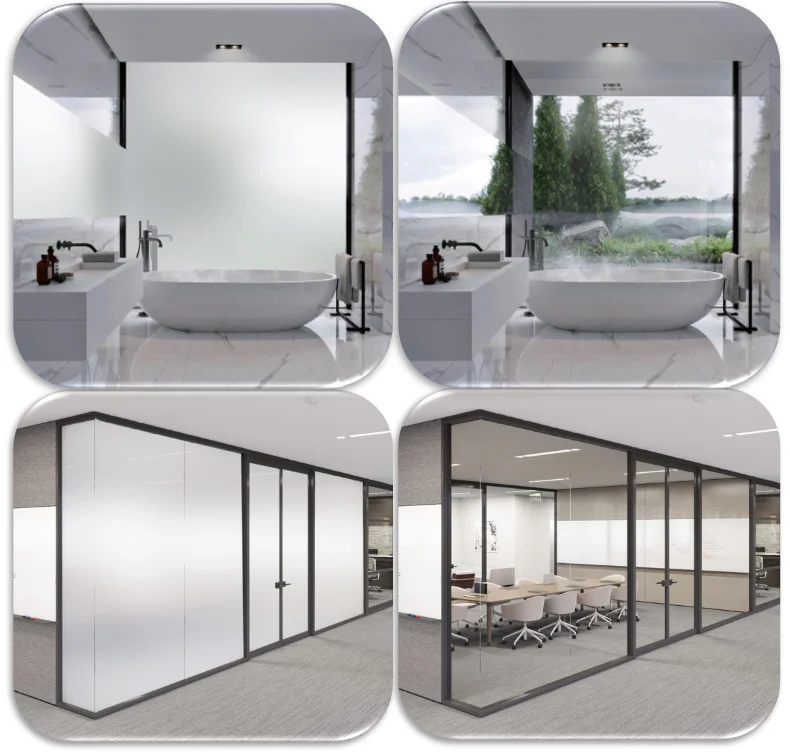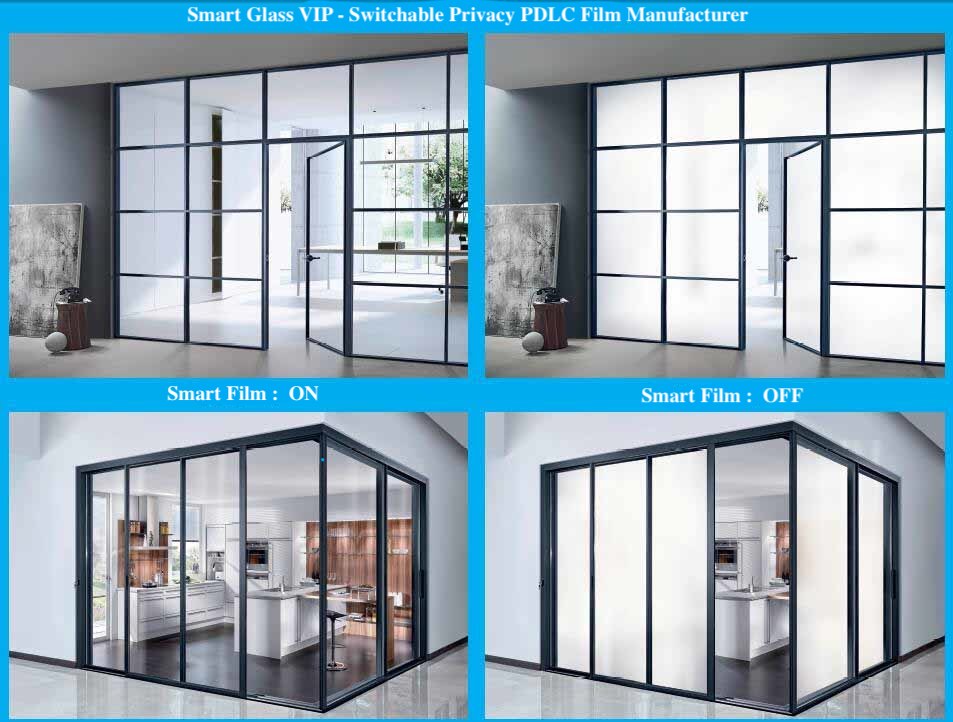Comparison Between Smart Tint Glass and Smart Glass
People often ask about the things that differentiate smart tint glass and smart glass products. And they are right because it is always good to know about the product before you buy. Having thorough product knowledge helps you buy the best possible product as per your requirements. This is the only way you can get the best value for your money by purchasing the right product for your application. In this article, we will talk about the two technologies used for different applications in homes and commercial facilities.

Smart Tint Glass and Smart Glass: The Basics
Different terms used for describing switchable privacy glass include switchable smart glass, PDLC glass, or electric glass. These products can turn a frosted glass clear with just a push of a button. It uses PDLC technology that polarises PDLC layer crystals in connection with the electric charge. This process makes frosted glass clear because the light is now passing through it in a sufficient amount.
Generally, the switchable smart glass products comprise of two main technologies. They are manufactured with either smart glass or smart self-adhesive film. The two technologies look identical in outcome and effect, but they offer different benefits. Because of that, you can choose from smart tint glass or smart glass to meet your specific project application.
Switchable glass is available in an array of specialist and standard glass options. This extensive range allows integrators and designers to make the best use of the switchable technology. The designers combine switchable technology with additional functionality and protection.
Pros and Cons
We have learned the basics of the two technologies above. Now, we will go through the benefits and possible drawbacks of the two technologies.
Smart Glass
This variant of switchable glass offers you additional protection and cleanliness. There are several available glass options available, such as Fire Resistance, Double Glazed Glass, Colored Glass, Laminated-Safety Glass, and Sound Insulation Glass. All these types offer switchable functionality, allowing for top-level design and construction projects. This technology is an ideal choice for applications that need specialist functionality or legal compliance. It is a complete solution that needs professional installation.
Here are the advantages and disadvantages that come with a smart glass:
Pros:
Smart glass is very durable. If you buy a high-quality smart glass, it will last 15 to 20 years easily. Another benefit of smart glass is the increased privacy. Just push the switch and the glass will offer full privacy both visibly and audibly. The smart glass comes in different varieties so you can choose one as per your need. The available varieties include laminated, acoustic, double glazed, fire-rated, colored, and toughened, etc.
Smart glass is available in several colors, so you can easily pick one to match your room’s color scheme. The surface of the smart glass is anti-scratched and the maintenance of the glass is also very easy. This type of glass is best for both exterior and interior applications.
Another amazing benefit of this glass is that you can control the amount of light you need. It blocks ultraviolet rays and reducing costs on heating and cooling. The switchable technology allows you to replace your expensive blinds and curtains with an affordable option.
Cons:
The price of smart glass is higher than smart tint glass. Therefore, if your budget is low, it might feel like a drawback. Another possible downside is that it required professional installation, which means you have to pay extra installation costs. Once the installation of smart glass complete, you cannot trim or cut it. You will have to replace the entire smart glass. Switchable technology supplies appropriate voltage through a power transformer, adding a little more to your utility bills.
Smart Tint Glass
There are two categories of smart tint glass. The two categories are non-adhesive smart tint and self-adhesive smart tint. It is also known as a smart film. You can apply self-adhesive tint to your existing glass. The non-adhesive tint or film is generally used in producing smart glass. It is sometimes installed on the existing glass using special glue. Both options improve privacy and offer versatility to the environment. So, the application of this switchable tint doesn’t need you to replace your window glass.
Now, let’s go through the pros and cons that you need to be aware of before buying it.
Pros:
The primary advantage for which people use this technology is its affordability. It is much more affordable when compared to smart glass. You don’t have to replace your old glass because you can easily cover the existing one with the smart tint film. There is no need for professional installation as its installation is pretty simple. You can easily trim and cut the film as per the required size while installing the film. The best thing about it is that it also blocks ultraviolet rays like a smart glass.
The tint glass helps you reduce heating and cooling costs. This technology is a cost-effective alternative to expensive blinds and curtains. Some other advantages include increased privacy, easy maintenance, and on-demand light controls.
Cons:
Smart tint glass is susceptible to damage by bent, bruised, or creased. These films are available in only a couple of colors, such as grey and white. Therefore, you don’t have enough variety in terms of color selection. The lifespan of this technology is also less than the smart glass. A fine quality film would last 8 to 10 years if taken care of properly. Like a smart glass, it also needs a power transformer supply for appropriate voltage. It is recommended only for interior applications. They are available in categories, such as non-self-adhesive and self-adhesive.
Price of Switchable Smart Glass
Most leading switchable smart glass manufacturers are creating luxury smart glass products with features like Wi-Fi. Therefore, different types of smart glass will be available at different prices. Generally, the cost of standard smart glass is around $50 – $100 per sq. ft. It depends largely on the glass type you choose. If your budget is low, then you can opt for the smart tint glass that is known for privacy and low cost. You can choose from the two available types according to your budget.
Several factors contribute to the price of the smart glass. Those factors include the number of glass windows/doors, the glass type you choose, and the space occupied. Here, it is important to make sure that you do not buy low-quality products just to save money. Remember that a low-quality glass will have a short lifespan. The high-quality glass will always prove cost-effective in the long run. Always buy glass products from the top, well-known brands.

Bottom Line:
Both smart glass and films have specific benefits and downsides. If you are looking for a cheap solution that still ensures privacy, then opt for the smart tint glass. For high-end projects or exterior applications, you are advised to opt for the smart glass. Both offer privacy, but with different benefits and other characteristics.
It is important to make a comparison between the two options by going through their pros and cons. When comparing the two options, you should keep in mind the application type, your budget, and overall requirements of the project. This is the only way you can choose the most ideal option for your project.
If you are not sure about which smart glass option you should buy, then you can seek professional advice. A credible company can help you make the right decision after knowing your project requirements.
For More Products, Visit Our Website!



